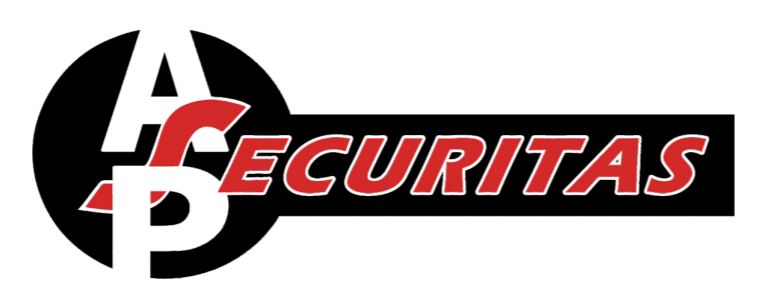
Anil Puri
CMD, APS group
A first generation serial entrepreneur, thought leader and an action catalyzer rolled into one – Anil Puri is a rare combination of a visionary, an innovator and a strategic thinker. He has used this combination to innovate and implement on-ground many new business ideas. His rich experience in various businesses has enabled him to nurture & mentor innovative ideas and scale them up.
Introduction
Video surveillance systems serve as the enabling technology to unlock this additional value. Many organizations originally installed these systems in years past with the goal of providing a forensic tool to support physical security investigations or simply as a deterrent. Using these systems for forensics required time-consuming manual processes that required investigators to spend hours analyzing captured footage, searching for suspicious events. On top of being an entirely reaction-based approach, lengthy forensic investigations could delay the actual response and pursuit of potential criminal suspects. Humans also quickly became a limiting factor as organizations sought to achieve real-time situational awareness through their video surveillance systems. Typical attempts to do this relied on human operators monitoring live video feeds to react and respond to incidents as they occurred.
Costs quickly mounted as organizations hired additional staff or outsourced this function to security guard services. Firms that chose to make this significant investment found that the reliance on human analysts meant high rates of errors and overlooked events. The next generation of video surveillance technology incorporates video analytics to reduce this reliance on human intervention, automating the analysis of captured video footage. Enhanced video surveillance (EVS) systems augment existing surveillance camera deployments with sophisticated video analytics tools to enable organizations to move beyond reactive security use cases and leverage their video as a valuable data source for business.
Traditional Video System Security
To assess the security of cloud solutions, it first makes sense to look at the traditional options. In theory, a system that uses an air-gapped network video recorder (NVR) is the most secure option. But such an installation largely defeats the purpose of having a security camera system in the first place. If it is walled off from the network, the footage would not be accessible for remote viewing to anyone offsite required to respond to an incident in real time. So, once you do make a system based on an NVR or digital video recorder (DVR) more usable, both the device itself and the attached CCTV security cameras become highly susceptible to hacking exploits. This helps explain why, in its benchmark 2018 Internet Security Threat Report (ISTR), Symantec ranked DVRs second on its list of vulnerable devices involved in the Internet of Things attacks against its honeypot last year. After an IT team configures its IP address for VPNs and opens ports to enable remote access to a WIFI security camera, the NVR immediately becomes one of the most hackable devices in the entire network. The biggest real-world implication is that IT teams often fall into a false sense of security. They know that an air-gapped NVR is foolproof, but they fail to recognize that introducing port forwarding to their surveillance infrastructure introduces some of the greatest risks to their camera system. This leads to longer-than-acceptable delays when it comes to updating firmware.
Cloud-Based Video System Security
With a cloud-based system, IT professionals are able to easily install hardware and software updates as soon as a vulnerability is identified. With increased vigilance and faster reaction times, the risk of physical and cyberattacks is ultimately reduced. The ease of installing security patches fosters a culture of ongoing risk mitigation, rather than one that falls victim to a false promise of security, which vanishes once a camera system is configured to enable remote access. Furthermore, today’s leading cloud-based IP cameras offer end-toend encryption and additional security features like two-factor authentication and single sign-on, that enable the latest security standards. Whether video data is at rest or in transit, using modern standards for data encryption and network security ensures that video stored beyond the camera’s hard drive, is protected in the event that hackers ever manage to breach the system.
Consider Cloud-Based Video Surveillance
When today’s IT teams encounter a new business requirement, they often look first to the cloud for solutions, hoping to gain the flexibility, scalability and agility benefits that the cloud offers. This is certainly true for video surveillance systems. Let’s look at four key reasons that organizations are moving away from on-premises video setups and adopting cloud-based video surveillance technology instead:-
Four Key Reasons
- The cloud is cost-effective. Video surveillance systems are often deployed for safety and security reasons, and while these are extremely important applications, they don’t directly align with business strategy. As a result, business leaders view video surveillance as a cost center and want evidence that solutions are working as cost effectively as possible. The cloud provides this assurance.
- Cloud-based solutions add business value. Once cloud video surveillance systems are integrated with an organization’s technology infrastructure, IT teams may use them to deliver additional business value. Novel applications of cloud-based video surveillance use analytics to help organizations optimize manufacturing processes, track building occupancy rates and automatically read license plates.
- Cloud surveillance is reliable. Cloud providers manage massive video infrastructures that support thousands of clients. This allows them to build out highly reliable environments that minimize outages and require zero downtime for system maintenance and upgrades.
- Cloud solutions lower incident response time. Cloud platforms provide robust search functionality that allows incident investigators to quickly track individuals and objects as they move throughout a facility. They also provide easy sharing of stored video clips and livestreamed data for law enforcement and other third parties.
Effects of Cloud in Video Surveillance
- Cloud storage ensures systems can easily be installed, monitored, upgraded and changed to suit the needs of the organization. New hardware components can be integrated into the security network via an IP connection and authorized people can access the system from anywhere, on virtually any Internet-enabled device. This level of integration also makes the price of purchasing and maintaining these systems far more attractive as well.
- Cloud-based video solutions have an advantage in reducing losses due to theft and equipment damage. The improved coverage assists in monitoring and tracking conversion rates and preventing incidents in the first place.
- The commercial cost of deployment can be significantly reduced by minimizing hardware dependence due to richer insights created by high quality live feed and enhanced visibility of video footage.
- An unexpected effect of the cloud is that security systems are shifting from what was once a purchase – made only when they absolutely must – to desirable investments that can secure tangible, specific, and measurable benefits. In the world of physical security, the cloud is here to stay, just as it is in the consumer world of smart watches, fitness trackers, and navigation systems.
The shared responsibility model
There are multiple entities that are responsible for the security of cloud video surveillance, including the cloud provider, the cloud platform and the cloud customer. The cloud providers are companies who provide the computing infrastructure to store video for the cloud platform, while the cloud platforms are the companies that provide cloud applications using the cloud infrastructure. For example, cloud platforms that use AWS as their cloud provider include Netflix, Twitch and LinkedIn. For security systems, the cloud customer is the enterprise, security leader or other user of the cloudbased system.
It’s important to distinguish between these different actors, as they all play an integral role in what is called the “shared responsibility model,” in which the security of the system simultaneously falls on the cloud provider, the cloud platform and the end user. The cloud provider is responsible for ensuring the integrity of its resources and equipment. Essentially, the cloud provider has responsibility for the cloud, while those using the cloud have onus for security in the cloud.
The cloud video surveillance company is responsible for keeping their customers’ footage secure when transmitting video to the cloud and storing it there. The security leader or user of the platform has responsibility for the security of their system and its devices. They should use unique and strong passwords which they keep private and be sure to keep device firmware updated to remain vigilant against cyber phishing attacks. While cloud security is a shared responsibility across these different groups, the majority of concern in the professional security industry is linked to the integrity of the cloud platform provider.
How to Select a Video Surveillance Provider
Not all cloud video surveillance systems are created equal, and different solutions are appropriate for different operating environments. Here are questions you should ask as you look for the solution that will best meet your needs:
- Do we have an existing investment in cameras and other equipment that we want to continue using? If your organization has a large footprint of modern cameras, replacing those could be costly. Consider a video surveillance platform that doesn’t rely on proprietary cameras but instead allows you to incorporate your existing investment.
- How much video do we need to retain and for how long? Compliance requirements vary significantly across industries, based on best practices and industry regulations. Make sure you consider the long-term storage costs of keeping video data in active and archival states with your cloud provider.
- Do we have sufficient network bandwidth to support the number of cameras and quality of video we require? Moving video data to the cloud is bandwidth-intensive, and cameras stream video constantly. Make sure your network is ready for this load before deploying a new cloud-based system. If it’s not, consider cloud-managed solutions that use on-premises storage to reduce bandwidth consumption.
Select a service provider who has proven and extensive experience in deploying both cloud-based and on-premises video surveillance solutions. If you’re planning to replace your existing legacy system with newer digital technology, our solution architects can help you develop your requirements, select appropriate technologies and deploy new technology throughout your facilities.
Conclusion
Video surveillance technology saw several key developments over the past decade that are enabling video surveillance to become a source of digital data. First and foremost, the emergence of IP-based cameras allows organizations to cost-effectively replace legacy analog cameras that ran over dedicated coaxial networks with IP-enabled digital cameras that run over shared wired and wireless Ethernet networks. Administrators can now place cameras in locations that were previously difficult to reach due to electrical wiring limitations. The use of Ethernet cabling with Power over Ethernet (PoE) offers the ability to hang a camera almost anywhere that a Category 5E or Category 6 cable can be pulled and use that single connection for both power and data. Second, the cameras themselves have gotten smarter. Modern surveillance cameras have computing and storage capability on board the device, allowing them to process video analytics in real time at the edge of the network. The term camera itself may be a misnomer in certain cases where it functions as an IoT sensor, capable of generating more than just video.
Physical security concerns are a top priority for executives, and video surveillance technologies play a crucial role in meeting safety and security requirements. A significant shift in recent years has been noticed in the industry as organizations realize that video surveillance is a technology solution which has force multiplier effect.
